

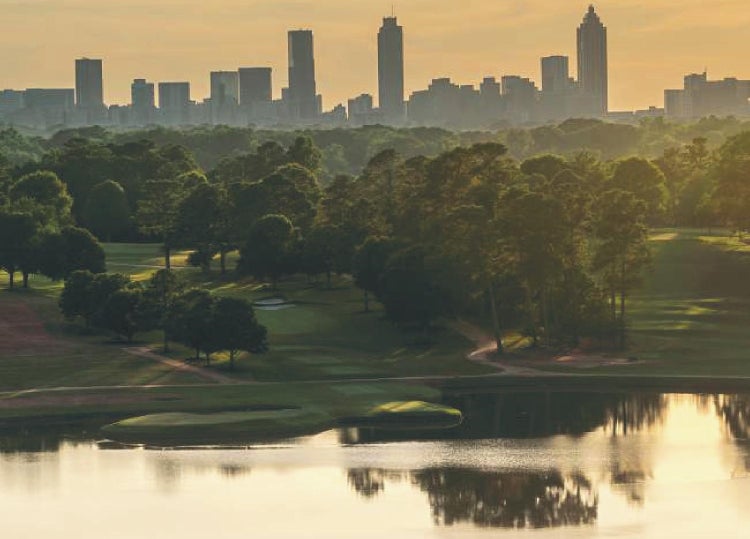
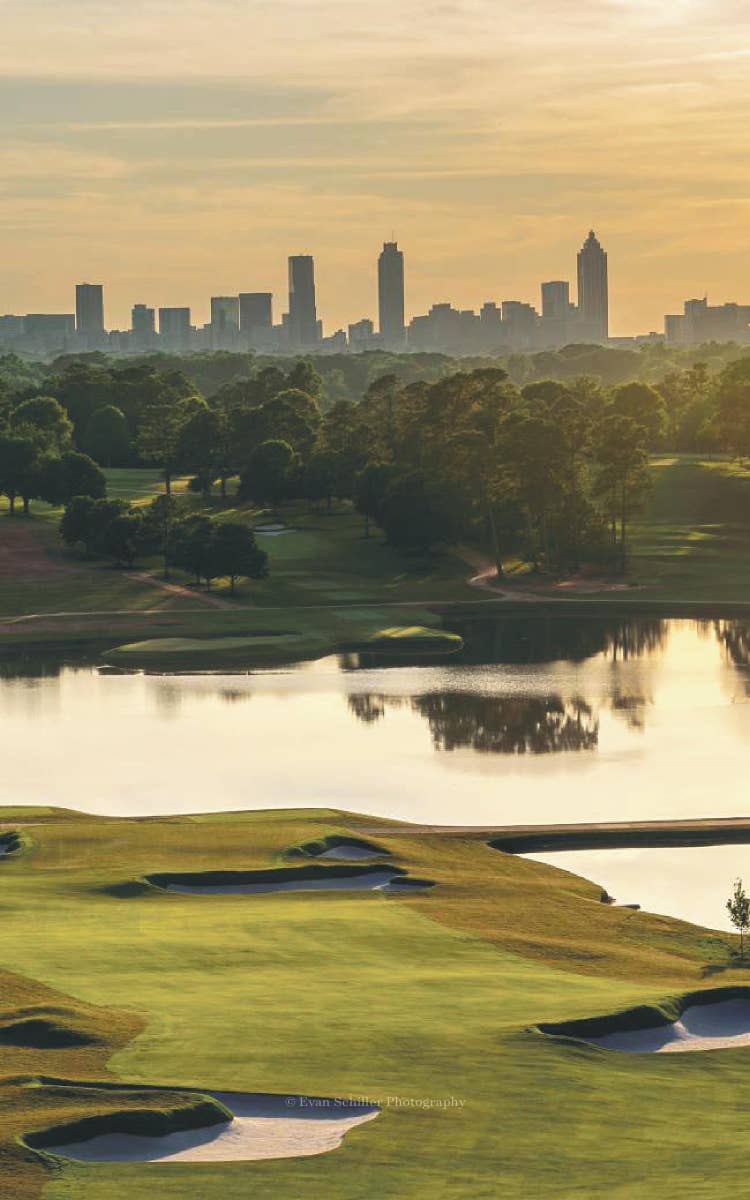
Established in 1904, East Lake is the oldest golf course in the city of Atlanta and, in fact, one of the most historically significant courses in the United States. A new era at East Lake begins at this year’s TOUR Championship. The Club is excited to unveil Andrew Green’s restoration, which combines elements of the original Donald Ross design with exciting new changes that reflect the modern game.
Using an aerial photograph from 1949 as inspiration, Green’s restoration efforts are showcased by the changes to the course’s topography. Every tee, green, fairway and bunker have been rebuilt. Fairways have been converted from Meyer Zoysia to Zorro Zoysia and in some cases been reshaped to encourage more movement on the ground. The putting surfaces have been reshaped to imitate the original designer’s intent and converted from Mini Verde Bermudagrass to TifEagle. For a list of key changes, scroll below for Green’s personal notes for each hole in the following pages.
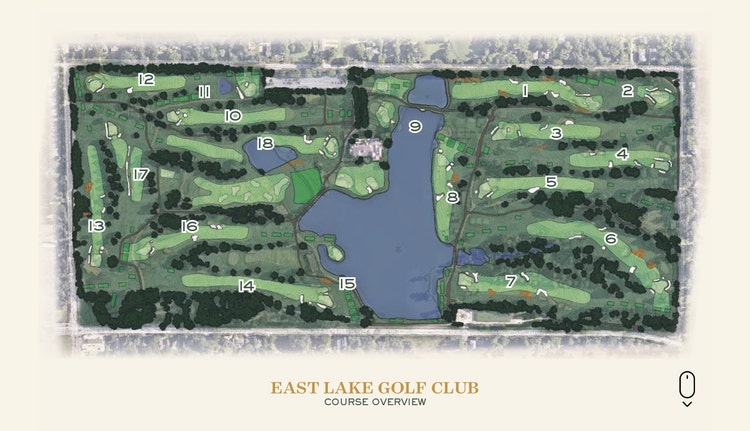
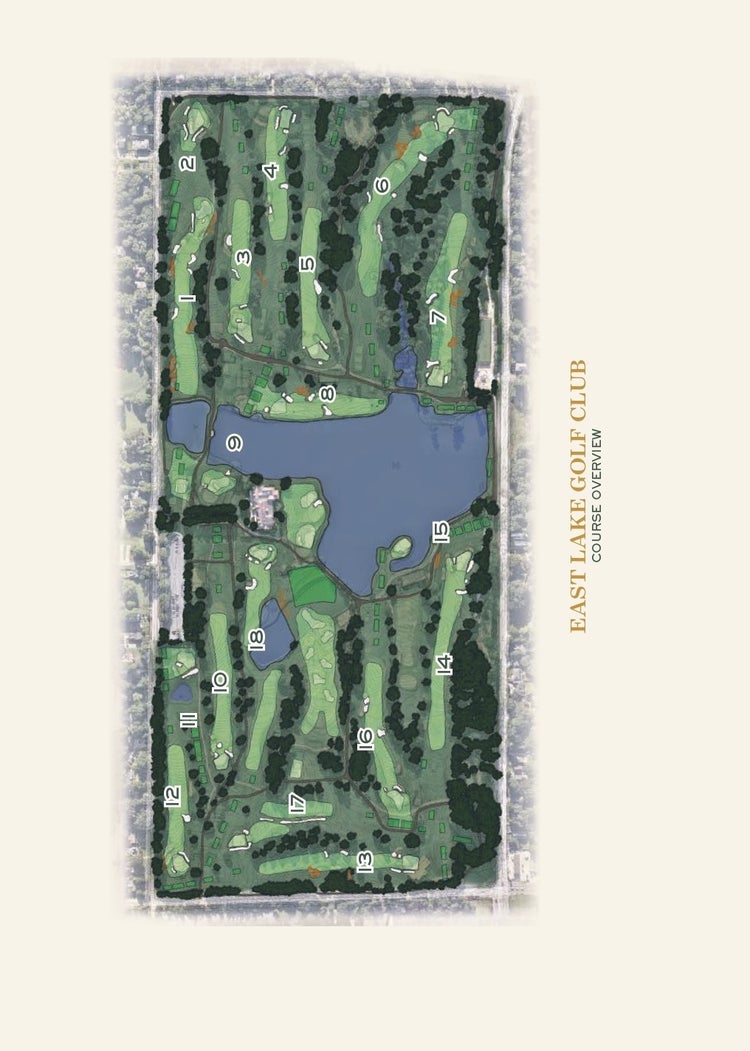
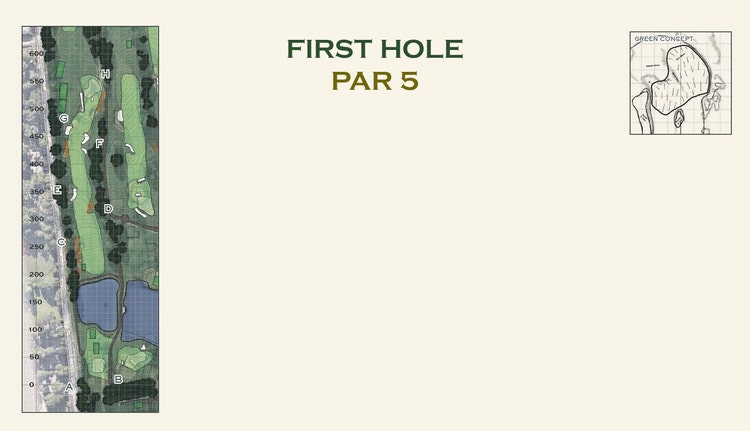
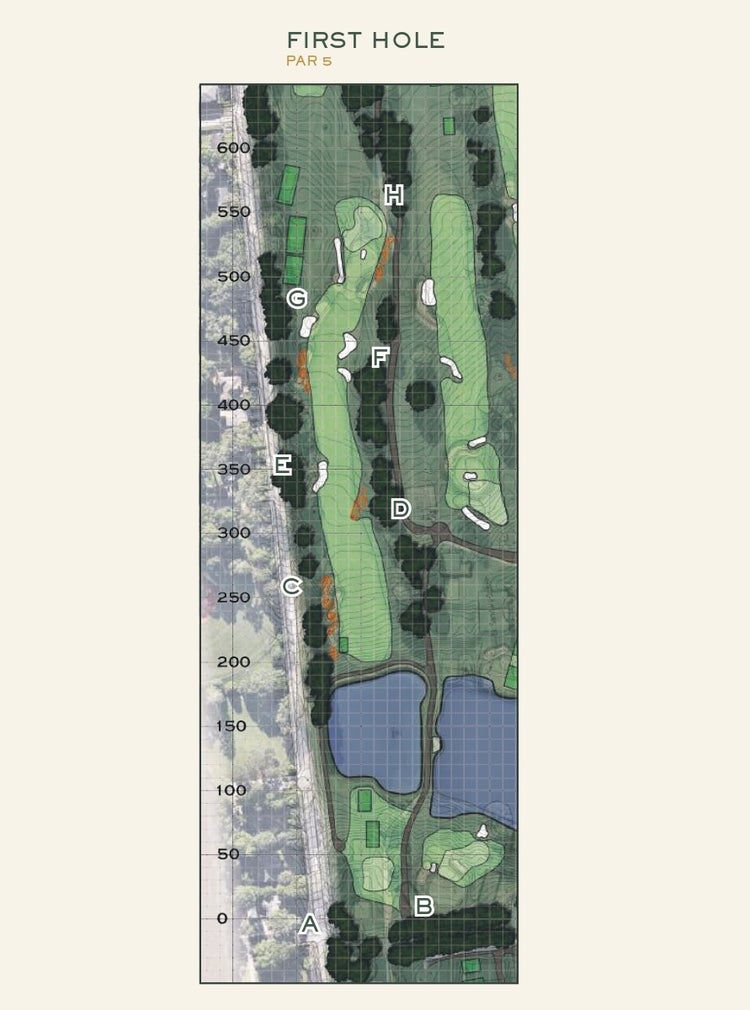
A. Rework the rear tee to balance space for the TOUR Championship build out and maximum overall distance.
B. Build a new warm up green in the space created by rearranging the pieces of the First Tee Experience.
C. Eliminate the left fairway bunkers in favor of hummocks to introduce the Ross style and help keep missed shots in play.
D. Drag a spine into the fairway along the right side of the hole to make the long player think.
E. Develop a new left fairway bunker that helps the hole dogleg.
F. Install a new fairway bunker pair on the inside of the dogleg at the second landing zone that creates new layers and perspective in the landscape.
G. Trade a series of bunkers to the outside of play with one that is well positioned.
H. Shift green back onto the high point and reshape the putting surface to showcase two levels that mimic the original dual greens.
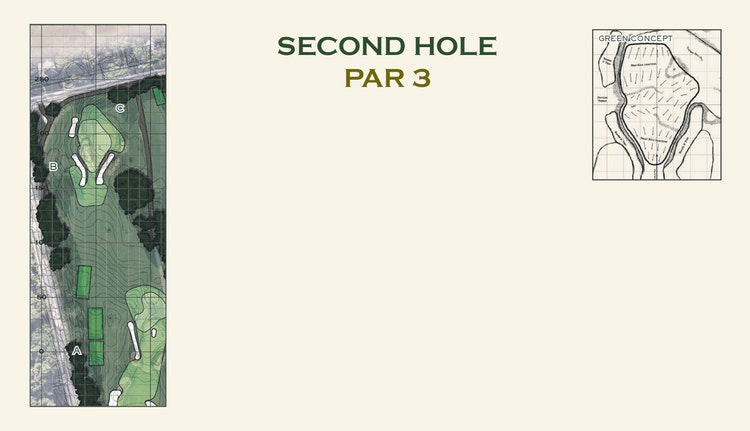
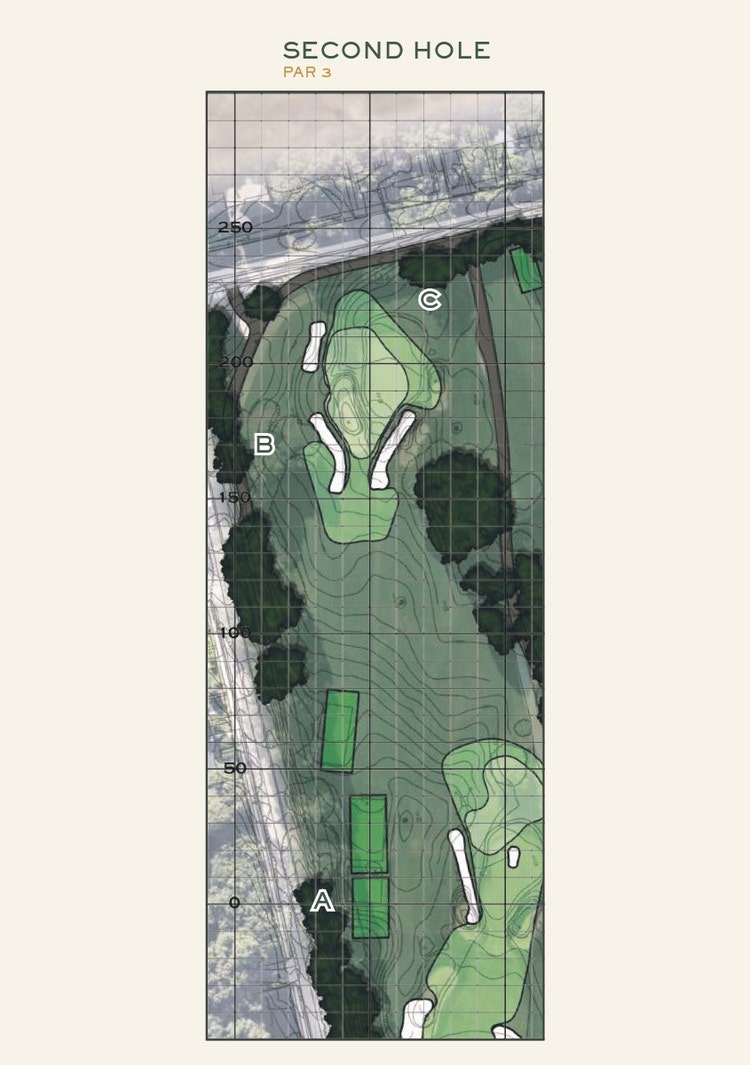
A. Shift the rear tee to the right yielding a more demanding tee shot for the best players as the fairway falls away and left; a fine tee shot will need to challenge the right side.
B. Develop a right fairway bunker that speaks to the original shared bunker near the old No. 1 green, asking the line of attack to challenge its alignment.
C. Add a new fairway bunker that is inspired by the Bobby Jones era shared bunker.
D. Restore the spirit of the original green site with a cross bunker in the approach and an offset greenside bunker strategy; spill out of fairway along the right edge.
E. Create a unique putting surface that slopes in multiple directions with a crest that differs the right and left portions of the green.

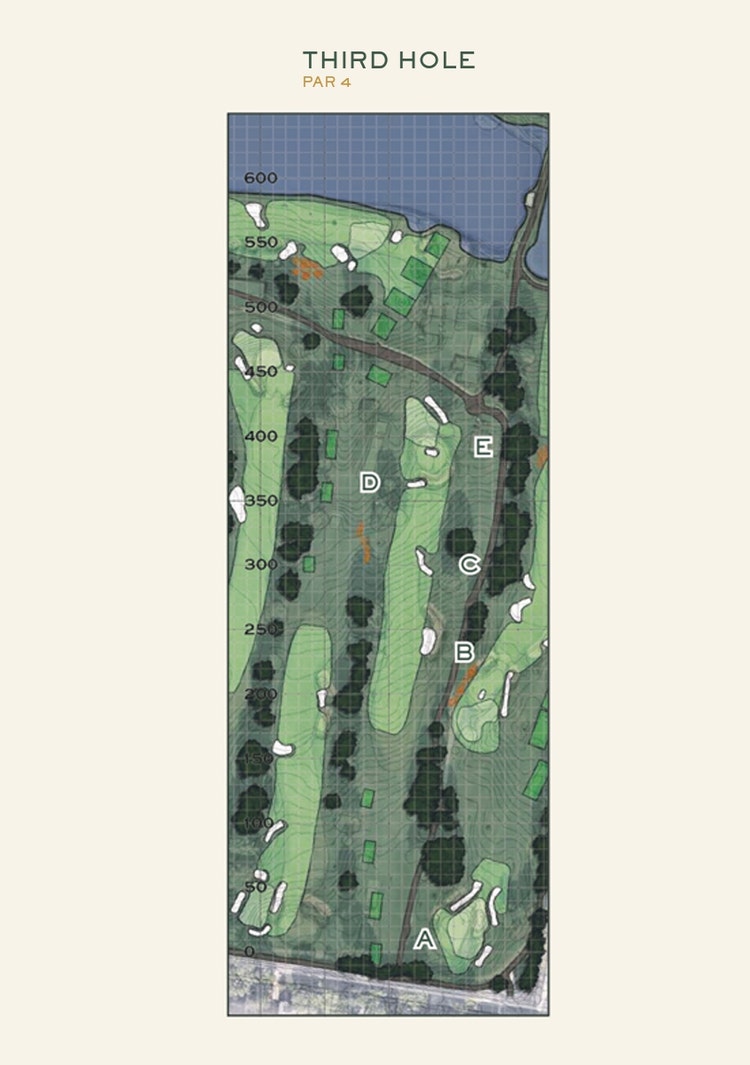
A. Shift the rear tee to the right yielding a more demanding tee shot for the best players as the fairway falls away and left; a fine tee shot will need to challenge the right side.
B. Develop a right fairway bunker that speaks to the original shared bunker near old No. 1 green, asking the line of attack to challenge its alignment.
C. Add a new fairway bunker that is inspired by the Bobby Jones era shared bunker.
D. Restore the spirit of the original green site with a cross bunker in the approach and an offset greenside bunker strategy; spill out of fairway along the right edge.
E. Create a unique putting surface that slopes in multiple directions with a crest that differs the right and left portions of the green.
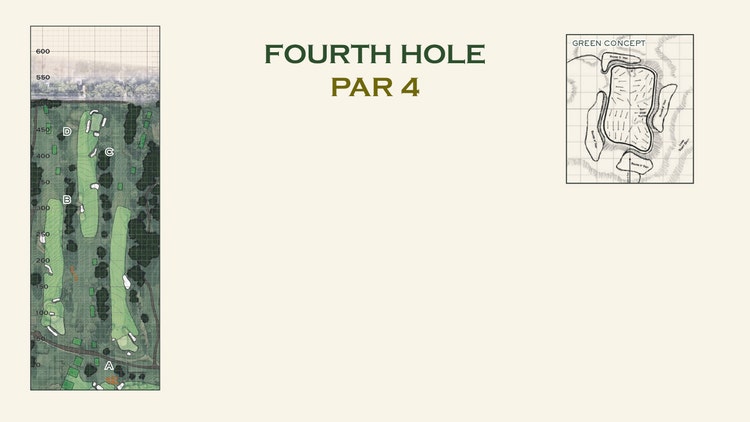

A. Shift the TOUR Championship tee to the right and keep it on the lake side of the service path.
B. Create strategic lines of play off the tee with a diagonal set of bunkers that demands precision in the line and length of the tee shot.
C. Set up an approach bunker in the rise to the new green, establishing a unique perspective in the landscape and a historically inspired target.
D. Utilize the dynamics of the original right green in the development of the restored green, surrounding the putting surface with sand and short grass.
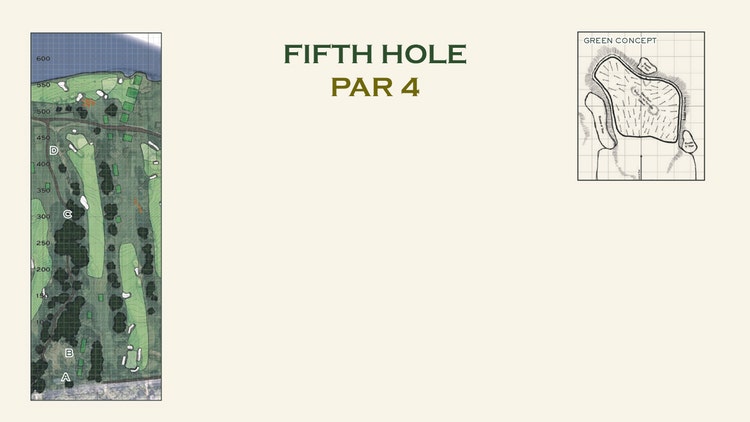
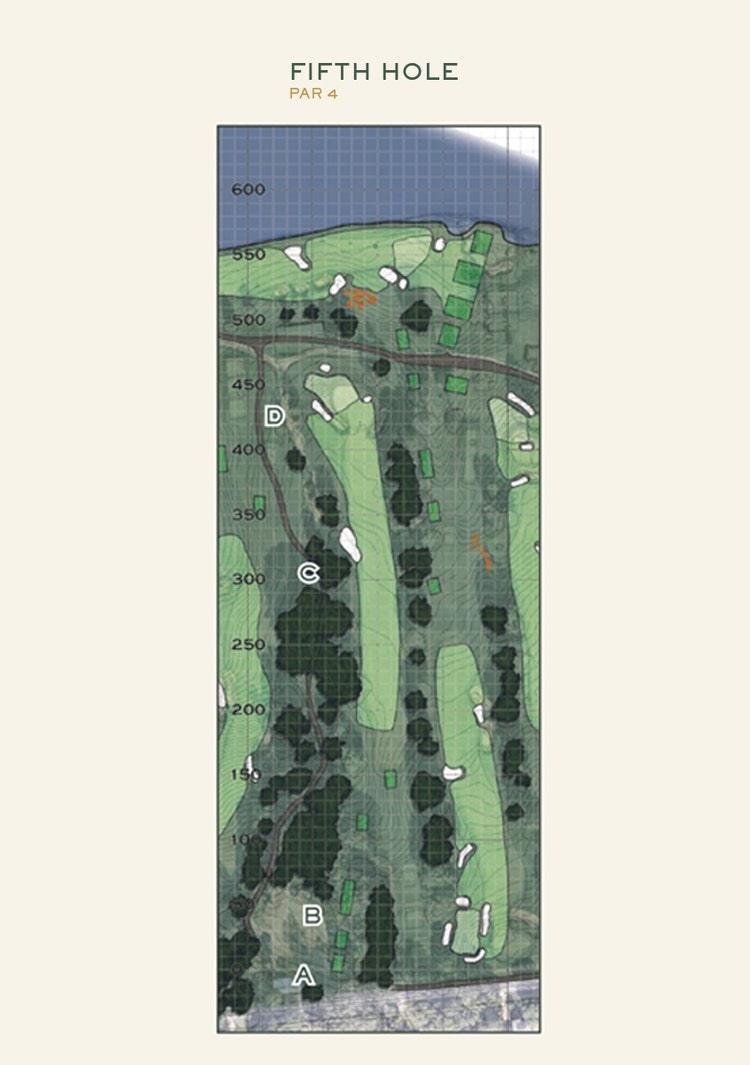
A. Shift the TOUR Championship tee to the left and establish a dogleg left that flows along the ground and mimics the original bend of the hole.
B. Move the main tees left and sit within the remnant “chute,” placing tee space along the line of play.
C. Create a new fairway bunker that boldly marks the inside of the dogleg and most aggressive line of play.
D. Shift the putting surface back and to the left and use the natural flow of the topography to establish a green that breaks in multiple directions including out of the back left.
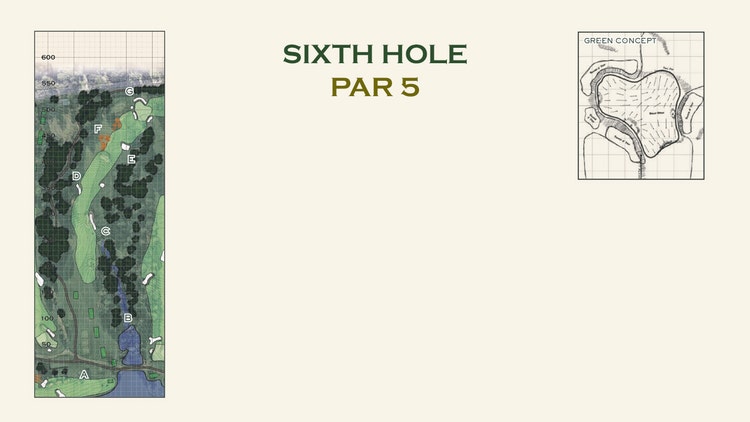
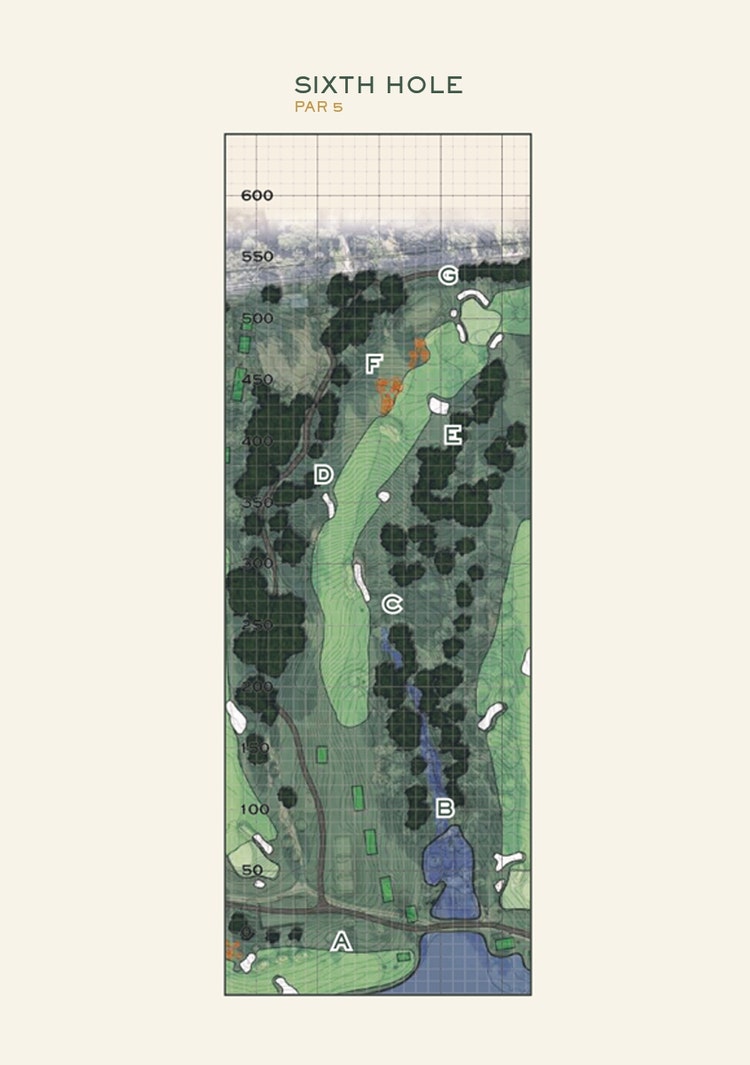
A. Rebuild the TOUR Championship tee and expand.
B. Use the natural creek valley to provide water quantity and quality benefits; enhance the aesthetic natural feel of the property.
C. Create a dramatic fairway bunker along the inside of the dogleg that guards the aggressive play.
D. Set up opposing bunkers at the long landing zone for additional thought off the tee.
E. Use a single bunker on the right to mark second landing options short, left, and long.
F. Place hummocks along the left side rough to offset the trouble on the right.
G. Shift the putting surface back/right and use the original double green as inspiration for a one-of-a-kind angled putting surface where hole locations drastically impact how the hole is played.
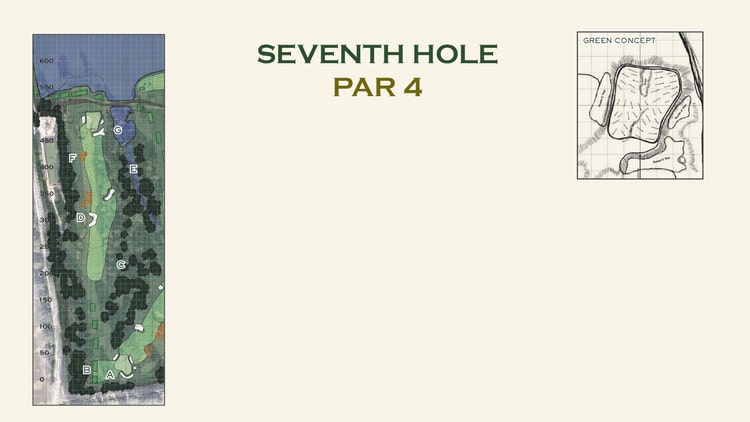
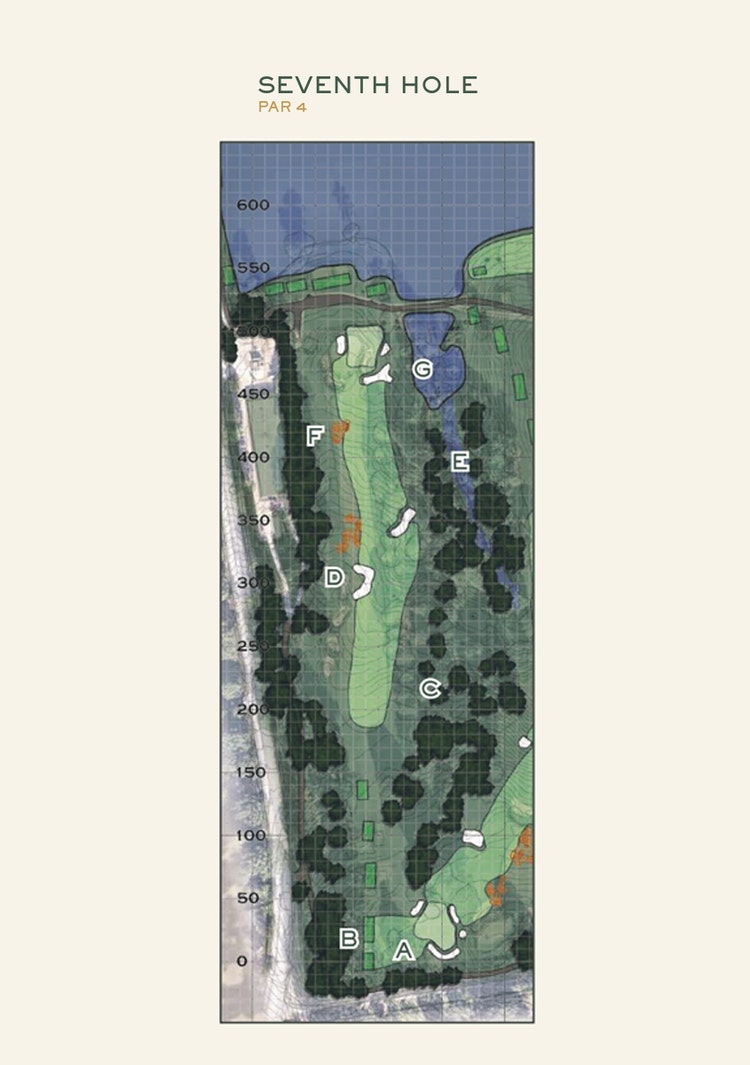
A. Connect the sixth green to the seventh tee with an extension of fairway.
B. Shift the rear tees to the right and into a better overall growing position.
C. Use some modest tree thinning to showcase the natural valley, gaining some broken lines of sight to the lake and clubhouse.
D. Shift the fairway right and develop a counter dogleg left that is unique in its alignment and strategy; use offset bunkers to enhance the tee shot.
E. Utilize the open space between the 6th and seventh holes to provide water quality and quantity benefits to the property.
F. Place a Ross roll along the left side to set up the approach angle along the left side.
G. Create a new green that is inspired by the original philosophy of the target; shift the overall complex to the golfer’s right.
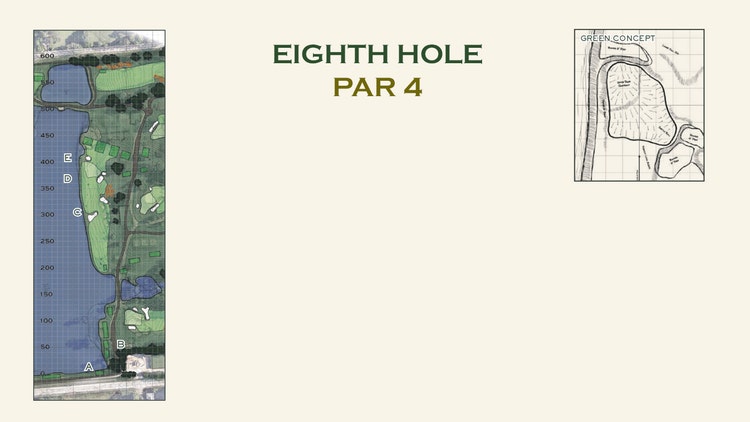
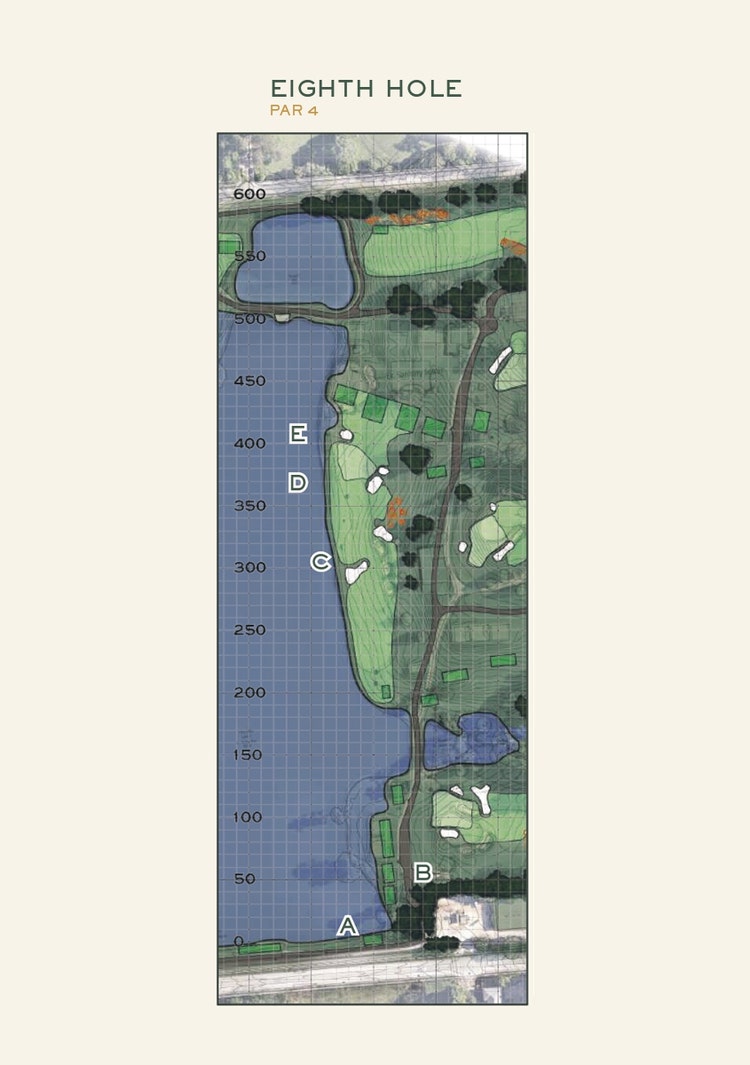
A. Consider options for maintaining an alternate long tee on the dam.
B. Shift the main tees to the right and allow for lake expansion; give teeing ground options for a wide range of set up distances, including the possibility of a drivable par 4.
C. Place a carry bunker along the water’s edge to help set up a multi-decision risk- and-reward tee shot; situate an offset bunker to the right that further expands on the thoughtful nature of a tee shot.
D. Position the green at a point that balances the fear of the hazard with the boldness of driving the green; use flanking bunkers and mounds to develop additional considerations in the tee shot placement.
E. Flow fairway from the putting surface up to the tees on No. 9, creating greater recovery variety.
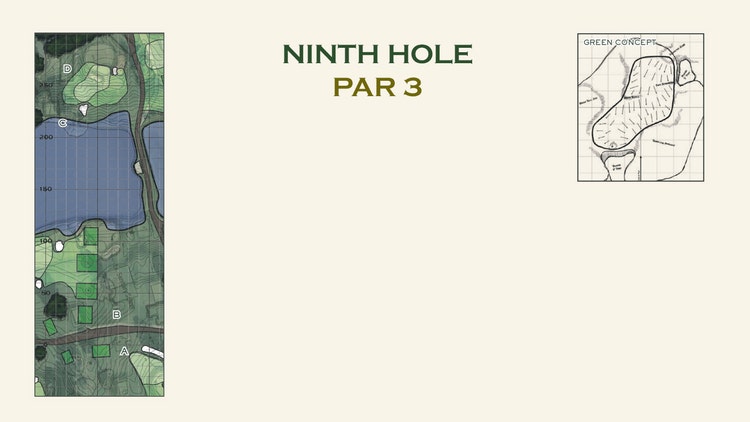
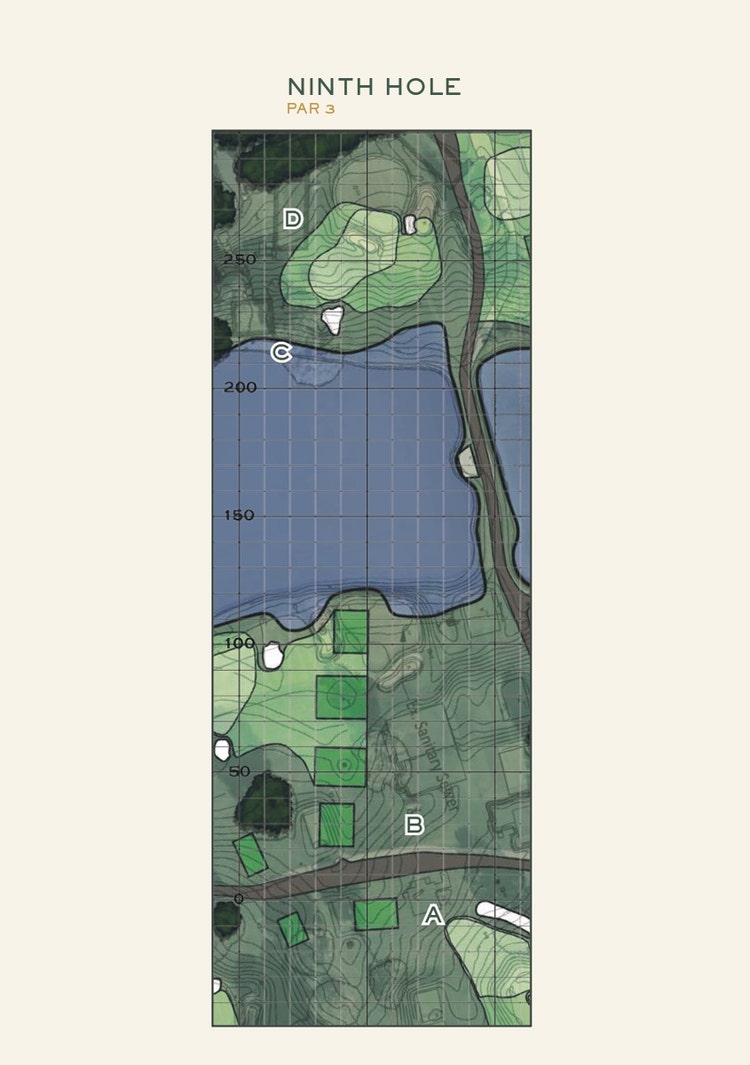
A. Build a new TOUR Championship tee at the maximum setup yardage across the service path.
B. Shift the main tees left, coordinating the alignment of the hole with a shift of the green forward.
C. Shift the green forward and use the left green from the Bobby Jones version of East Lake; use the triangular bunker to mark the putting surface and short grass fall-offs right and left of the putting surface.
D. Grade a rugged swale above the green site to move water away from the line of play.
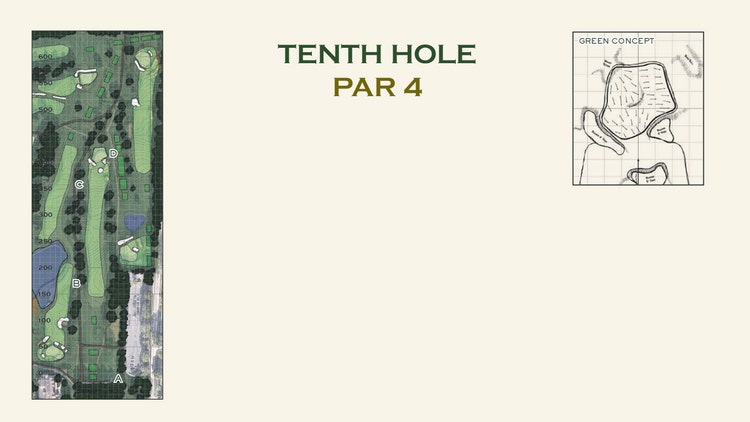
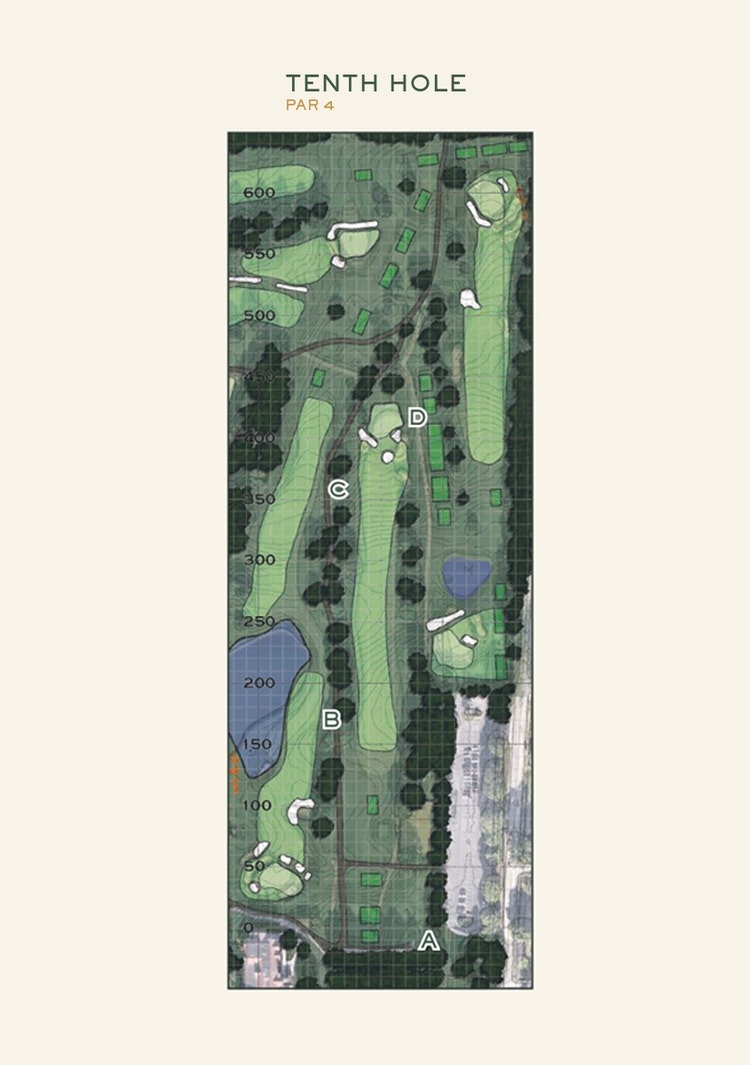
A. Rework the tee complex, pulling forward away from the entrance and aligning a bit to the right.
B. Gently realign the fairway left to provide more space for Nos. 11 and 12.
C. Restore the cross bunker in the approach to help showcase the perched green and original feel of the target.
D. Create a green that is inspired by the original version of East Lake, differentiating hole locations from left to right and front to back.
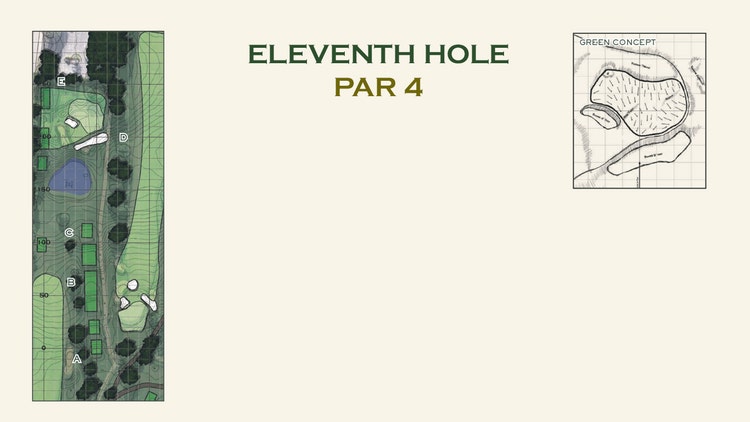
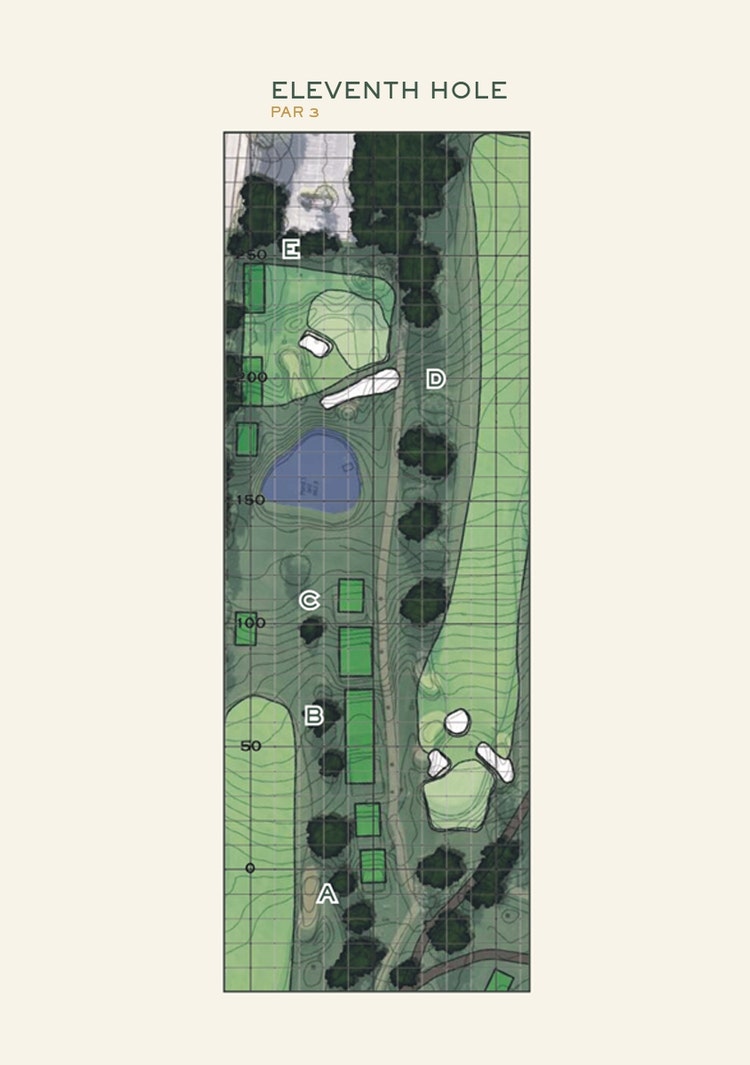
A. Maintain tee setup flexibility with rear tees that stretch this par 3 to well over 200 yards.
B. Combine middle tees to add wear tolerance and more options, settle the tee surfaces in the landscape with less overall earthwork.
C. Account for good par-3 yardage distribution across all tee markers and all three parts.
D. Restore the dominant green complex from the original design that uses a large, deep front bunker to set up an elevated target that provides a wealth of interesting hole locations.
E. Use short cut turf to flow off the putting surface and create dynamic recovery opportunities.
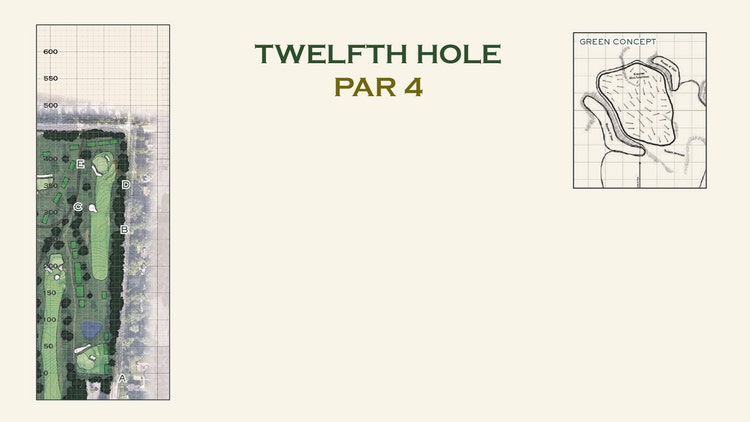
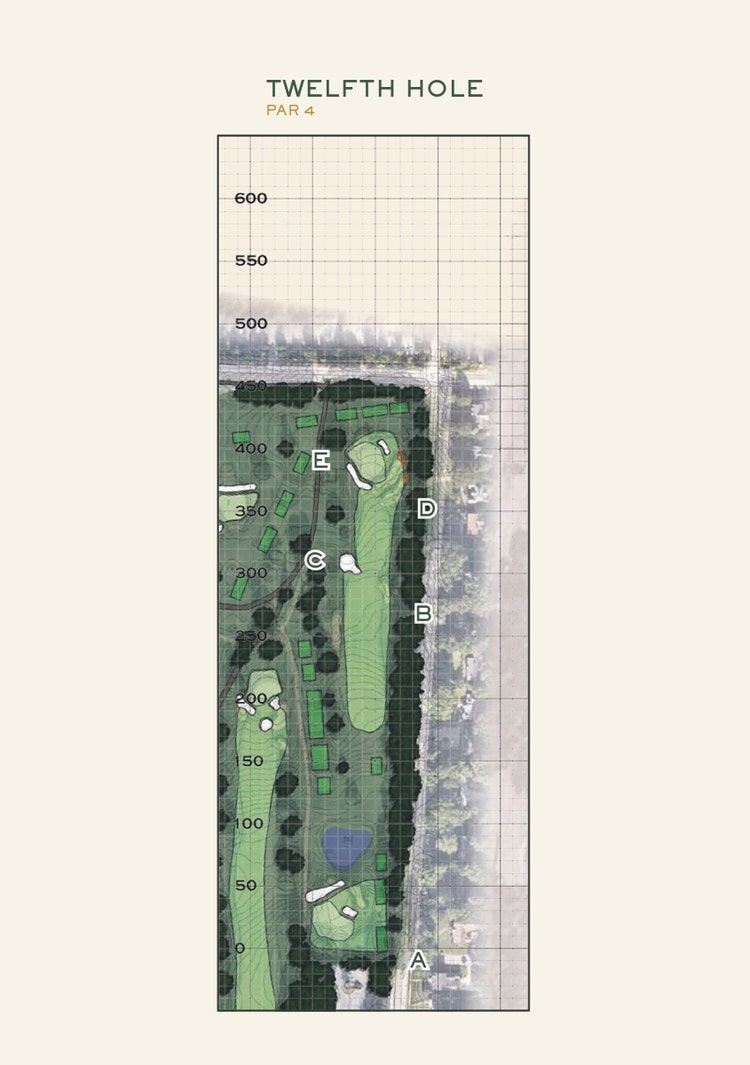
A. Enlarge the existing rear tee in place.
B. Embrace the strategy of this par 4 with focus on the boundary along the right side and the challenges it creates.
C. Develop one key fairway bunker on the left of the hole that keeps a player honest as they avoid the trouble right.
D. Shift the approach to arrive at the green from the right and embrace the uphill nature of the green site.
E. Create an inspired green surround that provides angles of play and interesting hole locations along its depth; flank the front left and back right of the green with sand.
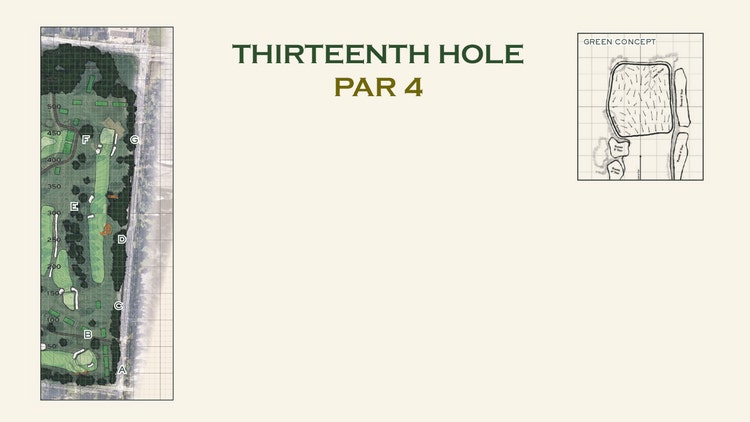

A. Work the alignment of the tees to the player’s left slightly to provide a better buffer to the road and get them away from the tree line.
B. Provide new teeing options down the line of play on the far side of the service road.
C. Create a new forward tee 30 yards shorter.
D. Trade the sand on the right side of the fairway for a hummock field that adds a unique challenge and improves the drainage and function of the hole.
E. Place two strategic bunkers along the left that challenges the long player from all tees.
F. Showcase the rise in the topography and the magnificent tree along the left.
G. Restore the amazing qualities of this green seen in the historic documents — long narrow bunkers resting on its edges that trail from the putting surface and ruggedly beautiful green banks.

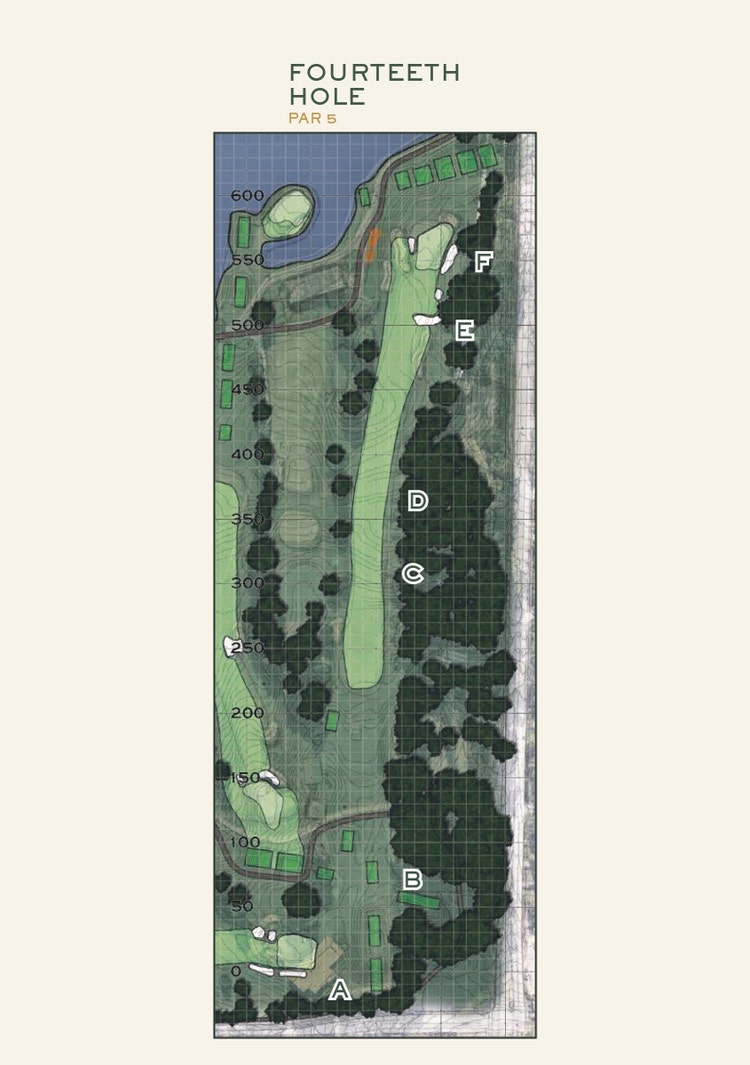
A. Work the rear tee back as much as possible in the given space; lower the entire main tee complex and reduce its artificial stance.
B. Provide additional setup options with a new middle tee that moves forward and rests on the natural topography.
C. Regrade the fairway to have a more natural and rugged presence; still provide a range of places for the ball to come to rest but allow missed shots to move into the rough.
D. Rework all the drainage basins along the right side of the hole to feel more in keeping with the inherent grade.
E. Use stacked bunkers to balance the ability of the hole to play strategically for all players (and even as a par 4).
F. Rework the green to feel more like the original and provide a grass depression off the back side of the putting surface.
G. Create a lower left portion to the approach for additional recovery and attack options.
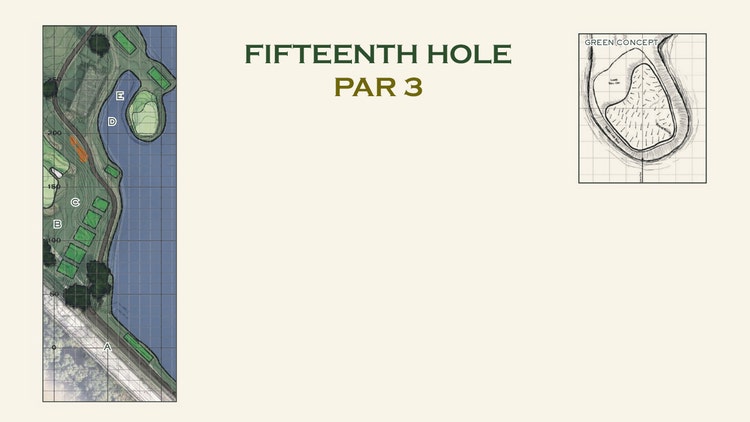
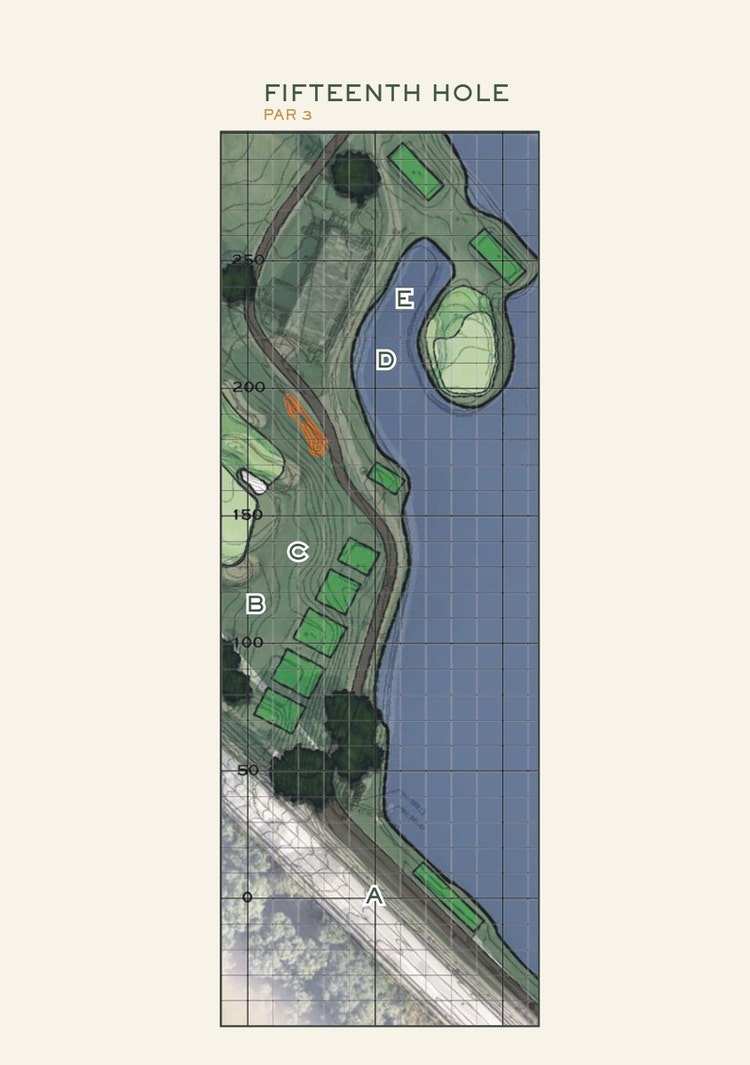
A. Protect the tee option on the dam.
B. Shift the main tee alignment to the right and set each tee level in the land so that the views of the green and lake are enhanced.
C. Adjust the lake edge to balance the overall wet area of the lake with the practice improvements.
D. Widen the cove that guards the left side of the hole to improve water quality.
E. Develop a bunker-less, challenging green that pulls inspiration from its original version, including the cupped roll-off along the back left.
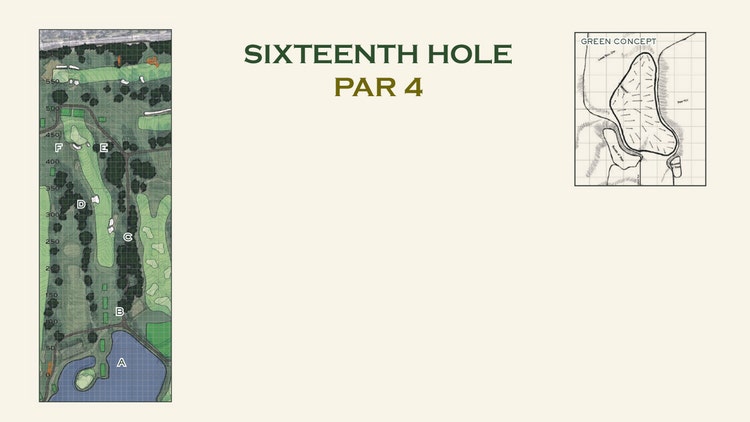

A. Maintain the existing presentation of the hole for the main tees shifting their alignment slightly right.
B. Find setup opportunities with a series of middle and forward tees that become more centered on the fairway.
C. Establish stacked bunkers in the land along the right of the fairway as seen on the original layout.
D. Realign the left fairway bunker to face the player and become a more impressive challenge along the inside of the dogleg, allowing more risk and reward for an aggressive line of play.
E. Work to recreate the rugged low that Bobby Jones wrote about being a critical part of the hole along the right approach.
F. Rework the green to be deep and narrow — more in keeping with the original vision for this target; add variety to the way the hole plays from front to back.
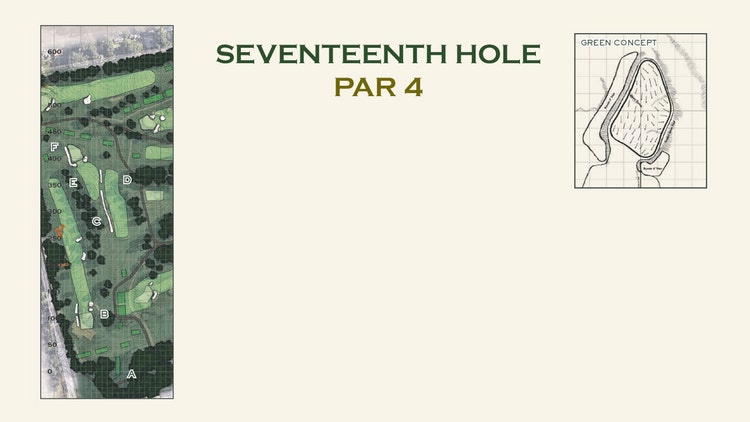

A. Keep a crossover tee for use in the TOUR Championship.
B. Expand the main teeing area and shift slightly right so that an aggressive line of play is more readily available to the player if they choose; provide options for this to be a drivable par 4 as conditions allow.
C. Use the original road bed / Civil War embankment as an elongated hazard that bisects the fairway as shown in the historic documentation, making the player choose a line and distance off the tee.
D. Extend and expand the right portion of the fairway.
E. Create a viable long fairway / approach that works to feed the ball along the ground towards the green.
F. Restore elements of the original green with a unique shape and surrounding features; develop hole locations that balance spin control and distance of approach to further ask the player to make decisions along the entire hole.
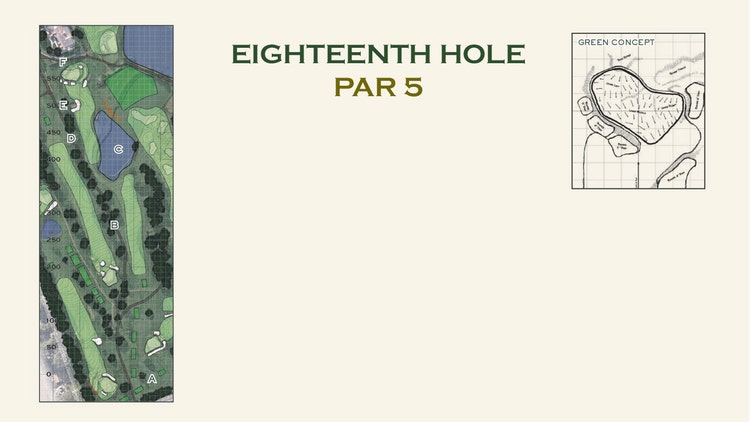
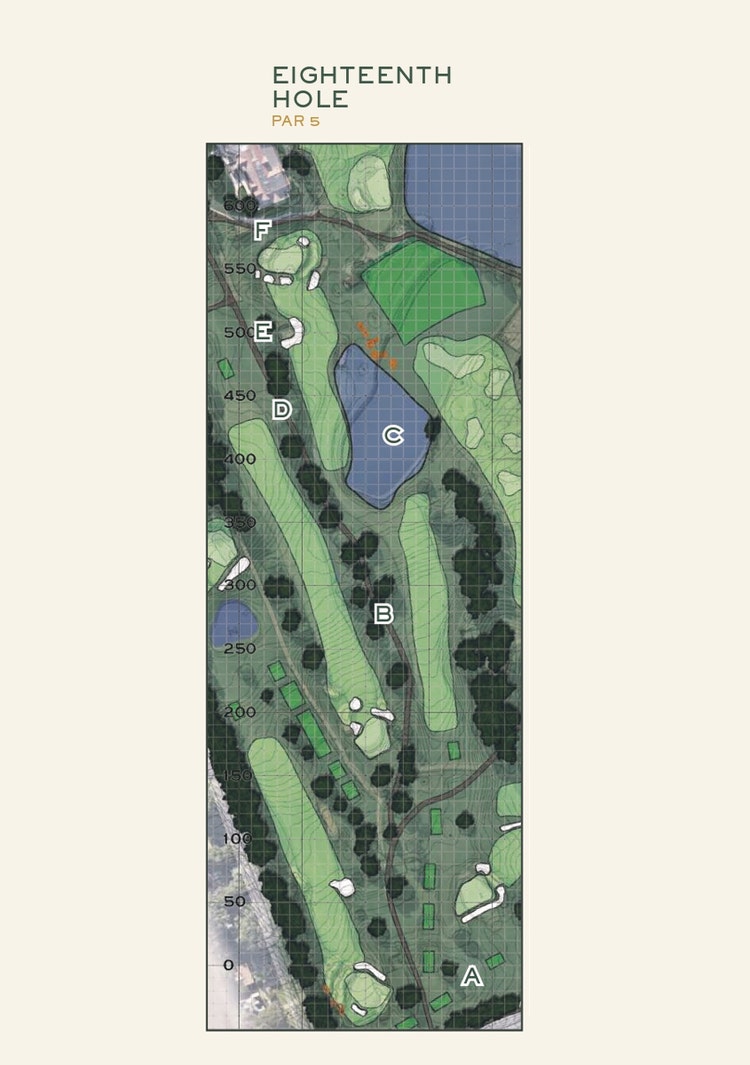
A. Maintain the rear tee location with a slight adjustment to its alignment.
B. Regrade the fairway to best represent the natural topography — leaving plenty of space for balls to settle out — but enhance the altered lies that are possible.
C. Redevelop the lake that cuts through the hole with a twist in its alignment, putting pressure on the player to be accurate and true on the home hole.
D. Work the left side grading to provide options to play across the water for the shorter players.
E. Use unique bunkering and grading to establish the longer options for the second landing zone.
F. Shift the green left and develop a unique angled green that best reflects the greatness of East Lake.
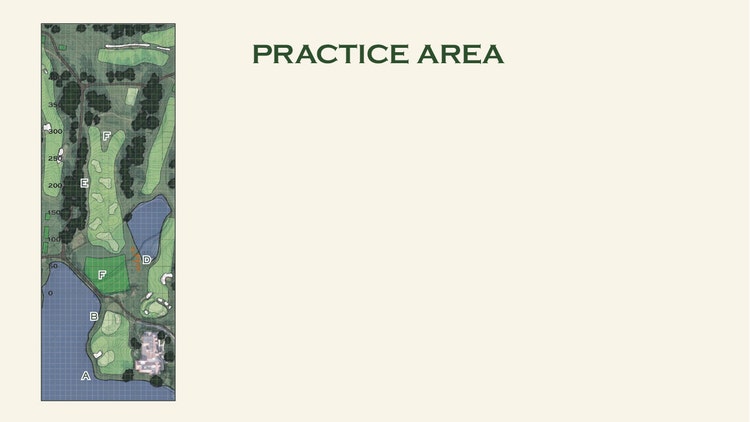

A. Utilize the available space to create an expansive short game area along the lake edge; use a combination of fine cut turf, fairway and sand to recreate all shots around the putting surface.
B. Tuck a large practice putting green into the space between the driving range and clubhouse.
C. Build a substantial grass tee of over an acre (46,000 sf) that provides three times the natural turf surface of the current space.
D. Fill in the lake to provide the appropriate practice options inside 100 yards; leave a portion of the lake along No. 18 to provide the best strategic and functional foundation; place a series of hummocks along the rough bordering these features to discourage erroneous lines of play.
E. Develop a series of life-like targets that are presented like the golf course without undue maintenance and sand; the surfaces will be perched and read as golf greens.
F. Create an interactive long practice space with a split fairway that encourages working the ball both directions.
TEXT AND GRAPHICS: East Lake Golf Club
PRODUCER: Stephanie Royer